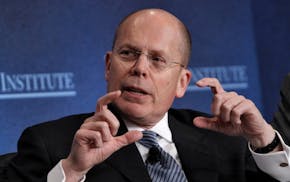I'm a financial do-it-yourselfer. And an eager one at that.
It's a good January day when a tax form lands in my mailbox. I diligently scour credit card statements in search of fraud and routinely perform gut checks for whether we're spending too much on lunches out or Amazon downloads. (Yes and yes.)
As for long-term financial planning, we're in pretty good shape. We invest using mainly low-cost index funds. We take advantage of company matching funds and fully fund our Roth individual retirement accounts. We ignore chatter, and invest on schedule, in good markets and bad.
Yet this normally content DIY-er is feeling less sanguine. The kids are growing; the college funds aren't. We're still living in our starter home, but tortured by a compulsion to be conservative on the one hand and more comfortable on the other. And the constant hum of wants, needs, should-dos and must-dos is driving me nuts.
I've been finding myself (gasp) wondering if we could use an outside opinion.
Just 17 percent of Americans use a financial adviser, according to the 2013 CEB Iconoculture Consumer Insights Values and Lifestyle Quantitative Survey. When respondents asked why they did not work with an adviser, popular reasons included cost (''It's too expensive'') and lack of need ("My finances are simple'').
But the financial planning model has been shape-shifting in recent years as new entrants, new pricing structures and new technologies evolve to offer advice to the masses. When I started writing this column in 2004, there were few options for people who didn't want a full-blown relationship with an adviser.
Now there's also a bevy of what Michael Kitces calls "cyborg" options for your financial planning needs. Over the past decade-plus we've gone from warily buying a book on Amazon to purchasing anything and everything online.
"The next 10 to 15 years will be spent getting comfortable buying services online," Kitces, a Virginia-based financial planner who tracks the industry on his Nerd's Eye View blog, said.
The range of online tools varies in cost, focus and complexity. There are online portfolio management tools such as Betterment and Wealthfront that fix your investment mix using a variety of low-cost exchange-traded funds (ETFs) and don't offer much more. The cost is a lot lower than what you'd pay an adviser, because you don't get an adviser. It's online or bust.
There are hybrid services like Personal Capital and Learnvest.com that use sophisticated online tools to paint a complete picture of your finances. Then you work with a financial adviser via video conference or phone — a benefit for those of us who'd rather not pay a baby sitter to learn how to save money.
These services cater to a range of consumers. Personal Capital wants the established investor with $100,000 to invest. Learnvest is focused on women in their 20s and 30s and offers a range of options from an $89 budget to a $399 financial plan, plus an ongoing $19 per month fee.
Experimentation isn't just happening online. Traditional advisers are playing with retainer models and subscription based services. Sophia Bera, a Minneapolis-based certified financial planner, started GenYPlanning.com after working for years in the traditional advisory world focused on wealthy baby boomers. Today she offers advice to millennials around the country for about the cost of a high-end gym membership. A monthly fee "allows people to easily prioritize financial planning into their monthly budget."
It never hurts to ask a traditional financial adviser about their fees and options. Some are willing to get creative and may offer just what you need.
While on my quest, I received information from USAA, my bank, on crafting a financial plan. Banks are often overlooked when you think of financial advice, but banks think of financial advice as a "key component of any relationship development," said Maryann Johnson, senior vice president of Market Management for the American Bankers Association. "Individuals working with banks long term have established checking accounts, mortgages, consumer loans. All data is so rich. It tells a story."
Finally, don't forget about the resources you might already have at your disposal. Some workplace retirement plans include access to advisers. I have an option for a $250 financial plan from Vanguard, which would include cash-flow analysis, retirement projections, a college plan and a 45-minute consultation with a certified financial planner on staff.
For a DIY finance gal, I appreciate the new options out there and am rejoicing at the affordable options for average people that really didn't exist a decade ago. Then again, it just means more choices in an industry already complex enough to make anyone's head spin. I'll let you know if I find the right fit.
Kara McGuire is a personal finance expert and consumer strategist for CEB. Send questions, comments or future column ideas to kara@karamcguire.com.

UnitedHealth sues the Guardian, alleging defamation in coverage of nursing home care

Prices for international flights drop as major airlines navigate choppy economic climate
Minnesota's med spa industry rises in popularity — and with little regulation

Hundreds line up at Best Buy to nab Nintendo Switch 2, in scene like '90s opening parties

